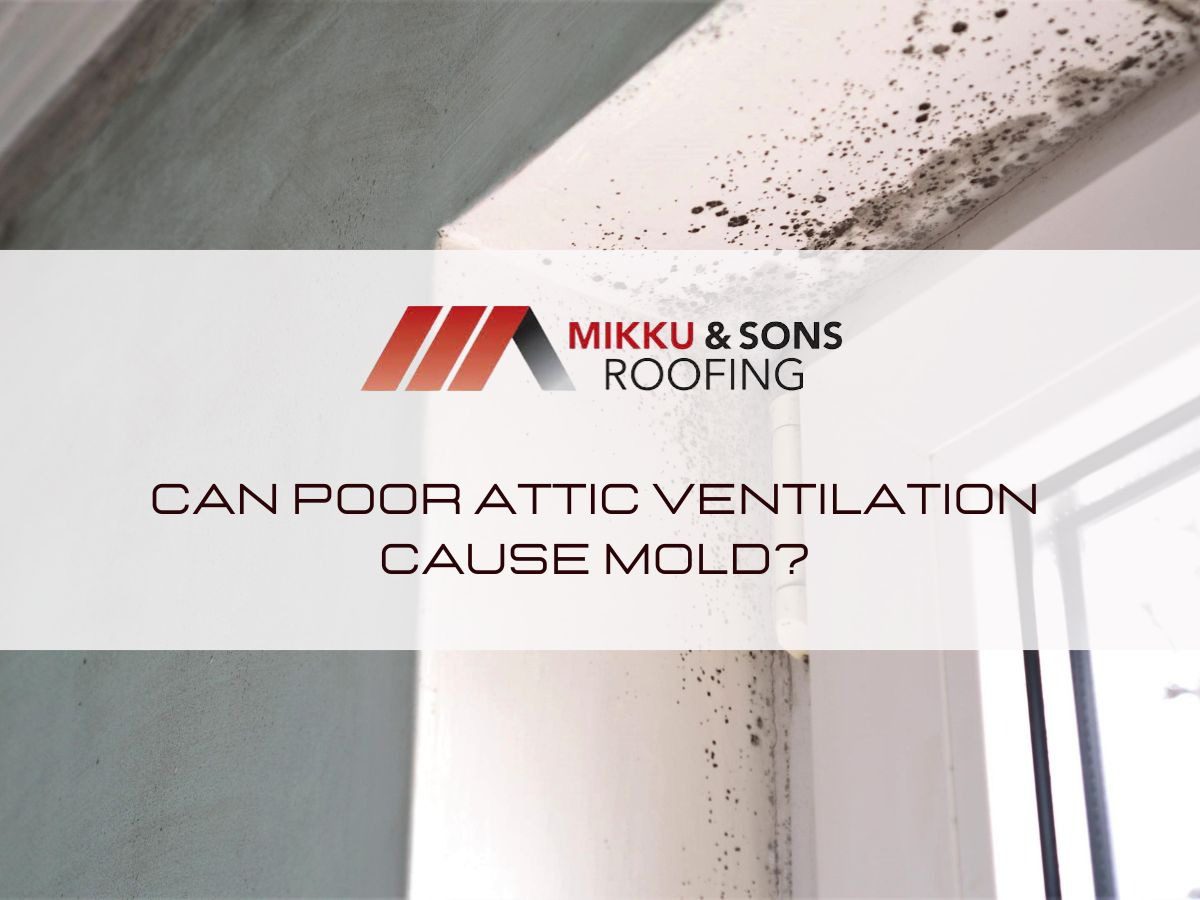
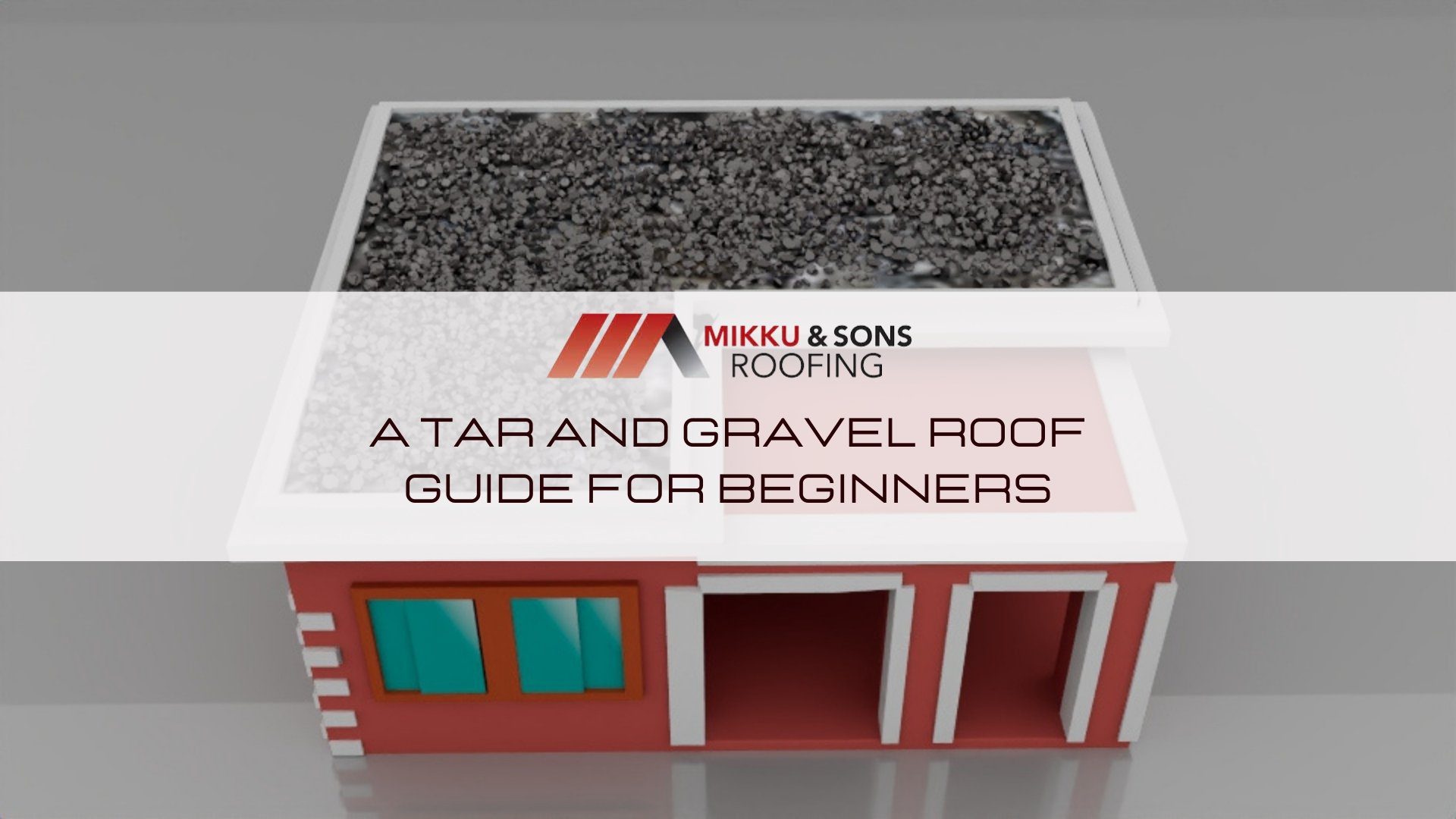
One of the most traditional and time-tested methods of roof construction is the tar and gravel roof, also known as a built-up roof (BUR). While less common in residential properties, these types of roofs are commonly found in commercial buildings due to their durability, cost-effectiveness, and ease of maintenance.
Whether you're contemplating a new roof, seeking to better understand your existing roof, or simply curious, this tar and gravel roof guide is a foundation for exploring this durable roofing option. This aims to provide a comprehensive overview of this roofing type, its construction, pros and cons, and factors to consider when deciding if it's the right fit for your building.
A tar and gravel roof is a type of built-up roof that consists of multiple layers of waterproof materials alternated with hot tar and topped with a layer of gravel. This form of roof construction has been around for over a century, largely due to its proven durability and resilience against harsh weather conditions.
The tar and gravel act as a strong barrier against water penetration, while the gravel protects the layers beneath from sunlight and physical damage. This makes tar and gravel roofs highly resistant to leaks, unlike some other roofing types.
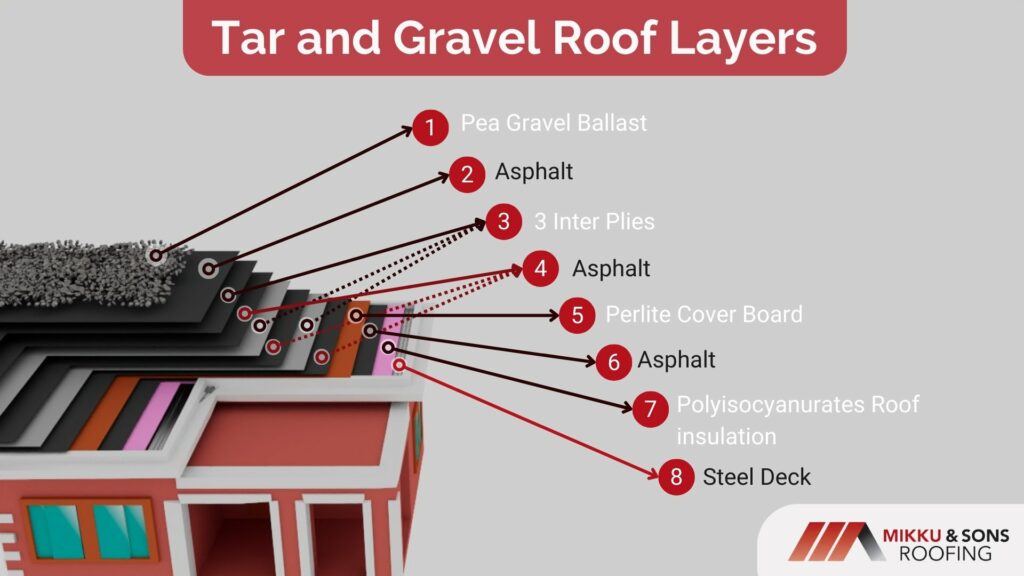
The construction of a tar and gravel roof is a multi-step process that involves the installation of several layers of materials. Here's a step-by-step guide on how a tar and gravel roof is constructed:
While this process is relatively straightforward, it does require the proper equipment and expertise to perform correctly. The installation process is often messy and potentially hazardous due to the hot tar, so it's recommended that it be carried out by a professional roofing contractor. The longevity and performance of a tar and gravel roof are highly dependent on the quality of its installation.
Remember, while tar and gravel roofing has a long lifespan, it still requires regular maintenance and inspection to ensure it stays in good condition. Debris should be removed, and any areas of exposed tar or damaged gravel should be repaired promptly to prevent leaks.
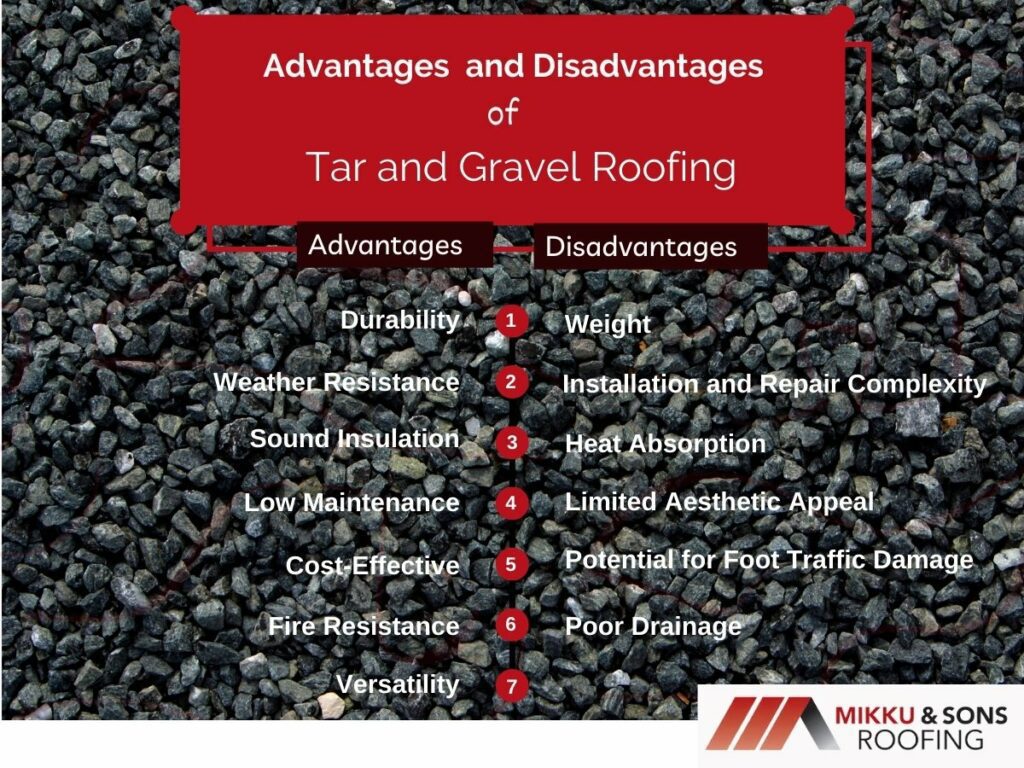
Tar and gravel roofs, also known as built-up roofs, have been used for over a century due to their inherent benefits. Let's delve into some of the advantages of tar and gravel roofing:
Tar and gravel roofs are known for their durability. When correctly installed and maintained, these roofs can last up to 30 years or even longer in some cases. The multiple layers of tar and felt create a resilient barrier against the elements, ensuring a long lifespan.
These roofs stand up exceptionally well to various weather conditions. They are highly resistant to leaks and can handle the rigors of both hot and cold climates. The gravel top layer serves as an excellent protectant against sun damage, heavy rains, and wind.
Tar and gravel roofs require relatively low maintenance compared to other roofing types. Routine inspections and prompt repair of any minor issues are usually sufficient to keep these roofs in good condition. The gravel top layer also protects the lower layers, reducing the frequency of repairs.
These roofs are often more affordable than other commercial roofing options, both in terms of initial installation and long-term maintenance costs. This is especially true when the longevity of tar and gravel roofs is considered.
The gravel layer of a tar and gravel roof provides excellent fire resistance, potentially slowing the spread of flames in case of a fire.
Gravel roofs are excellent at soundproofing. The tar, roofing felt, and gravel layers work together to minimize noise from rain, wind, or hail, making it a quiet option.
Tar and gravel roofs can be installed on various building types and roof designs. They're suitable for both flat roofs and those with a slight slope.
These advantages make tar and gravel roofing a popular choice for many commercial buildings and some residential properties, especially in areas that experience varying weather conditions throughout the year.
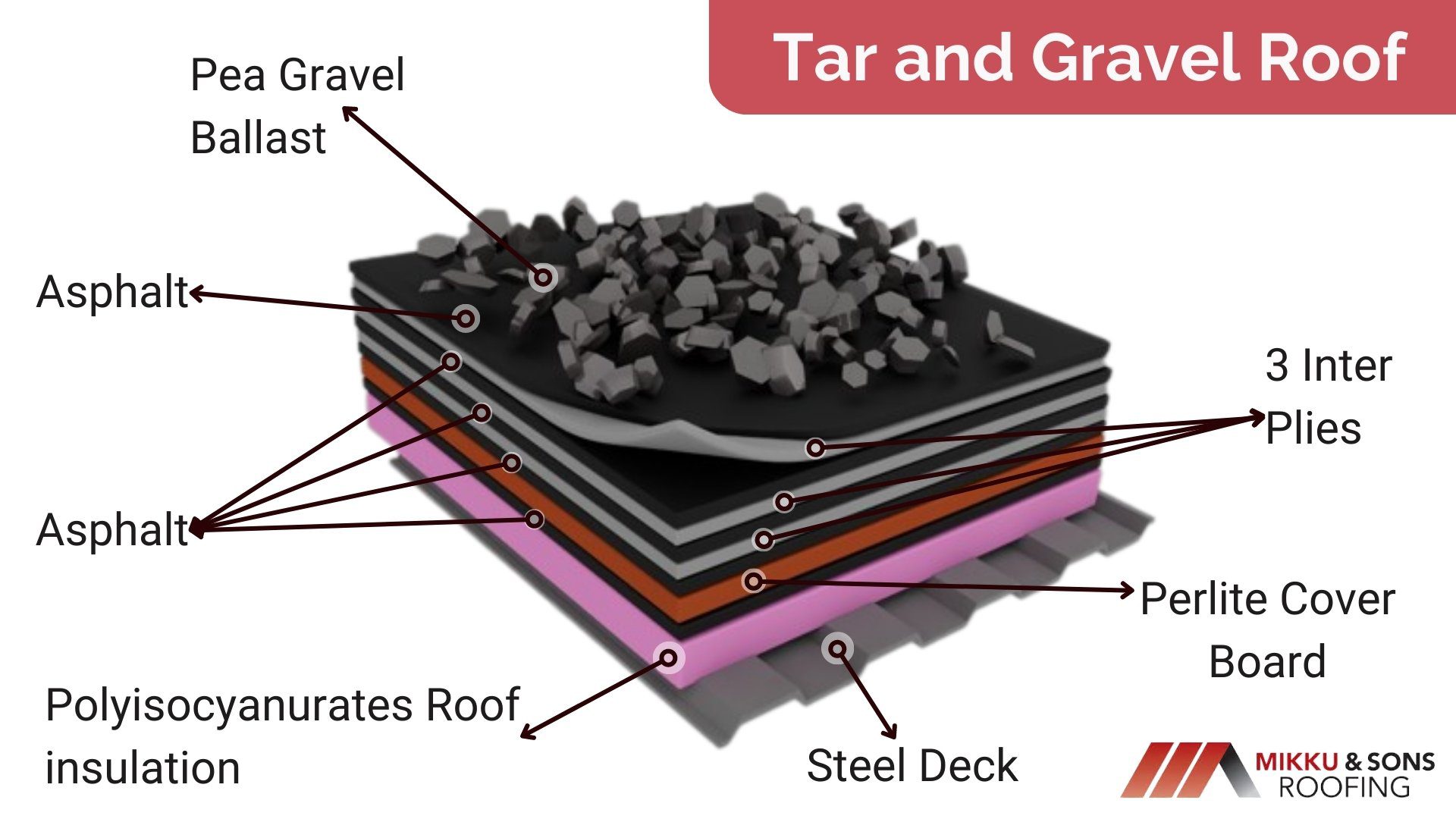
While tar and gravel roofs come with many advantages, they also have certain downsides that need to be considered. Here are some potential disadvantages of tar and gravel roofing:
One of the most significant drawbacks of tar and gravel roofs is their weight. The multiple layers of tar, roofing felt, and gravel make this roofing type heavier than others. Buildings must have the structural integrity to support this weight, which may be impossible for some older structures or certain designs without additional reinforcement.
The tar and gravel roof installation process is more complex and time-consuming than some other types of roofing. It involves handling hot tar and multiple layers, which can be messy and require specialized skills. Similarly, locating and repairing leaks can be difficult and require professional intervention.
Tar and gravel roofs can absorb a lot of heat, particularly if the gravel is a darker color. This can make buildings hotter during the summer months and increase cooling costs. They are not as energy-efficient as other roofing types, like cool roofs or green roofs, that reflect more sunlight and provide better insulation.
Compared to other roofing options, tar, and gravel roofs might be seen as less aesthetically pleasing. They don't offer the variety of colors and styles that options like shingles or metal roofing provide.
If the roof is accessed frequently for HVAC maintenance or other reasons, the protective gravel can be inadvertently kicked away, exposing the underlying layers to damage.
In the case of flat or nearly flat roofs, improper installation can lead to poor drainage, pooling, or standing water. This could eventually lead to leaks or shorten the lifespan of the roof.
Considering these factors is crucial when deciding whether a tar and gravel roof is the right choice for your building. Consulting with a professional roofing contractor who can assess your circumstances is always recommended.
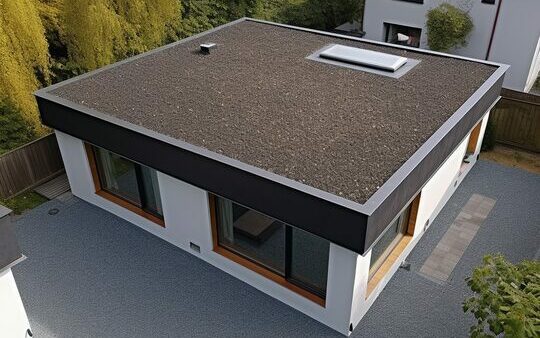
Choosing a tar and gravel roof hinges on several factors, including your building's structure, geographical location, purpose, and budgetary constraints. Due to their weight, tar and gravel roofs require a building with adequate structural strength. Weather conditions also matter, as these roofs are durable but can absorb heat, possibly raising indoor temperatures in hot climates.
The use of your building is another factor. If your roof requires regular maintenance access, a tar and gravel roof can be beneficial due to its resilience to foot traffic, although care is needed to avoid gravel displacement.
In terms of cost, tar and gravel roofs can be more economical than other types, both initially and in the long term, and they can last up to 30 years or more if well-maintained. However, if energy efficiency is a priority, other more insulating roofing options might be preferable. A professional roofing contractor can provide tailored advice and ensure proper roof installation.
Tar and gravel roofs are versatile and cost-effective options known for their durability and weather resilience. However, it's important to consider the structure of your building, as these roofs are heavy and require a solid foundation. Their installation and repair can also be complex and requires professional expertise.
While tar and gravel roofs are long-lasting and require low maintenance, they can absorb more heat compared to other roofing types and may not be the most aesthetically appealing option. Care should be taken if your roof requires regular access and, despite their benefits, they might not be as energy-efficient as some modern alternatives.
Professional guidance is crucial when deciding on a tar and gravel roof. With the information provided in this guide, you can decide on the best roofing solution for your building, considering your specific requirements and budget. Remember, your roof is a significant investment, and choosing the right one can contribute to the longevity and value of your property.
Tar and gravel roof replacement
